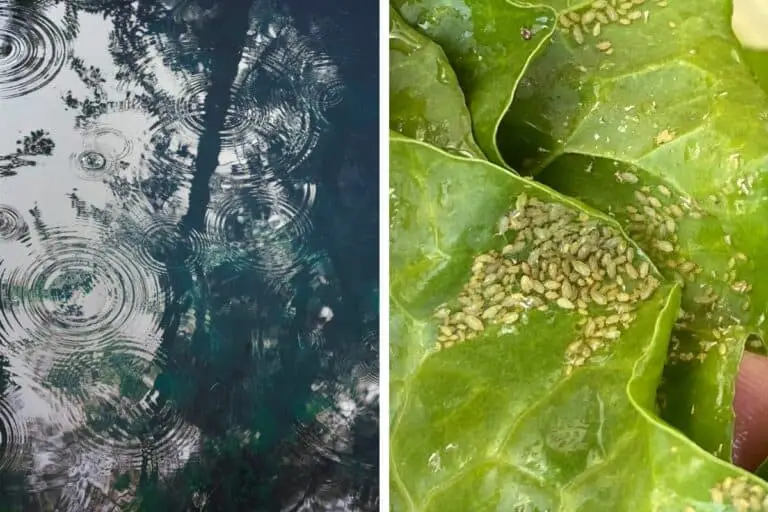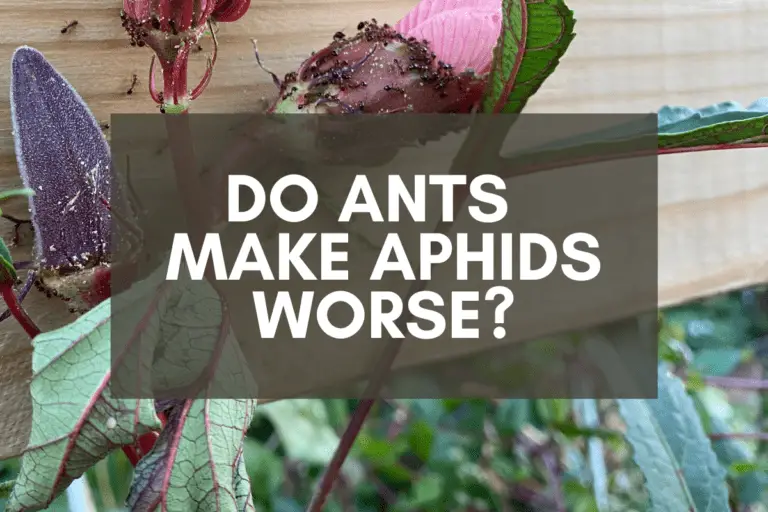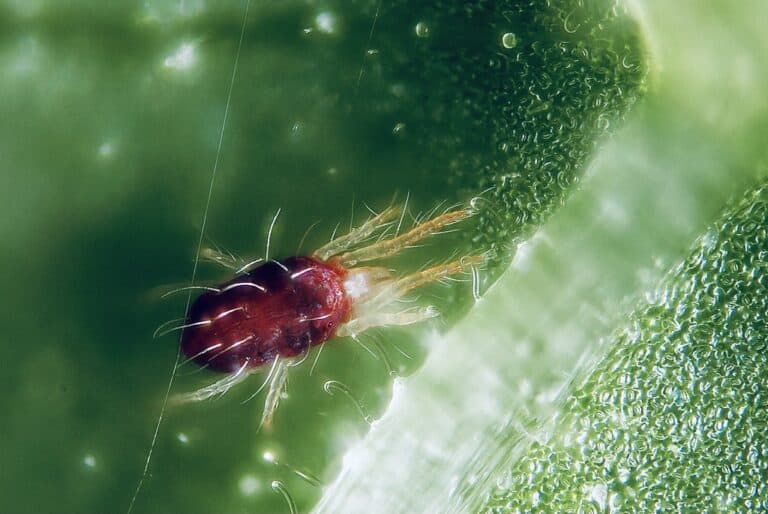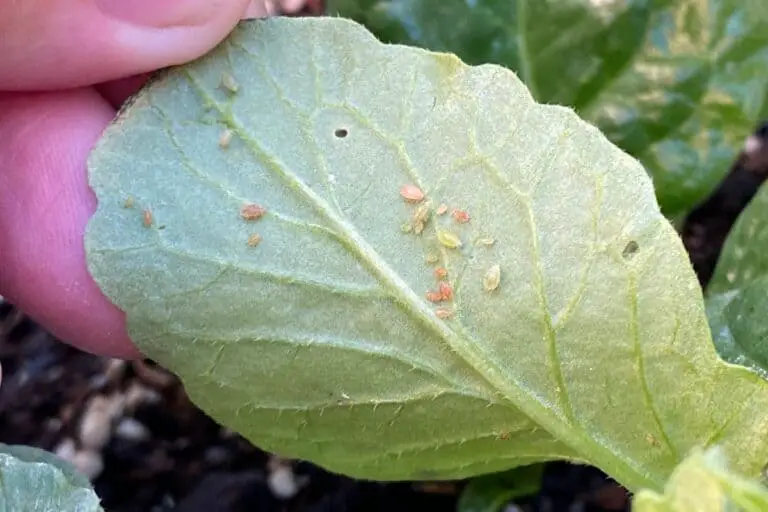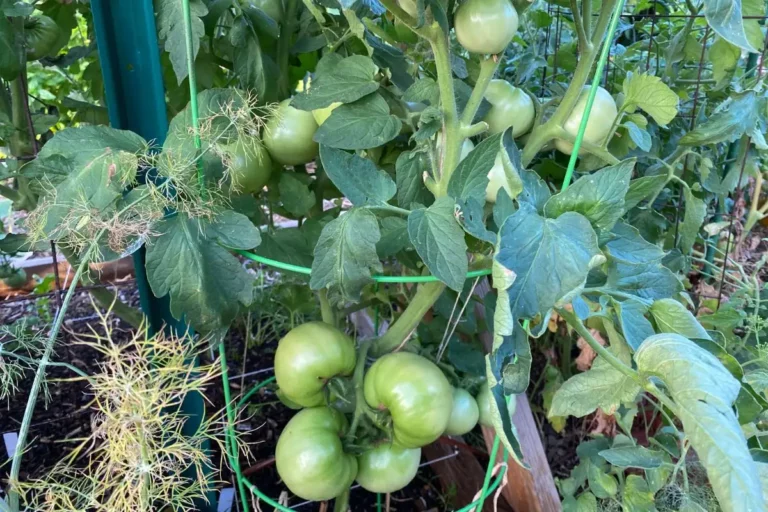Can Aphids Survive Cold Weather?
Last January, I went outside to take a look at my garden after temperatures in North Texas dipped to 18℉ (-7.8℃) the night before. As I expected, my swiss chard looked awful, and my brussels sprouts and kale were just barely hanging in there.
But when I looked closely at my kale, I noticed there were aphids on it. And guess what? To the naked eye, they didn’t seem all that fazed by the cold weather.
This got me wondering: What happens to aphids when it’s cold outside? Can they survive cold weather?
Aphids are able to survive cold weather because they’re cold-hardy insects that have adapted to regional weather fluctuations. Adults and nymphs have been known to survive in temperatures below 30℉ (-1.1℃), and some aphid eggs can survive short-term exposure to temperatures as low as -40℉ (-40℃).
Simply put, the winter months won’t completely kill off aphids in your area. Cold temperatures will slow them down, but they’ll do what it takes to stay alive in cold weather.
The good news is that aphids will experience extremely high mortality rates during the winter months (often as high as 80% or more), regardless of whether they’re in the adult, nymph, or larval stages. The bad news is that aphids who survive the cold weather will have the ability to reproduce at alarming rates once things warm up again. And aphids who survived as adults or nymphs will start reproducing much earlier than those who overwintered in eggs.
To understand how aphids survive in cold weather–and what you can do to stop them before they cause problems for you once spring arrives–let’s take a closer look at what happens to aphids during the winter.
Can Aphids Survive in Winter?
Let’s begin with adult aphids and nymphs. Many aphid species can’t survive harsh weather as adults or nymphs, so they primarily overwinter in eggs. But many other aphid species can handle cold weather just fine in their adult or nymph stages, assuming it doesn’t get too cold for too long.
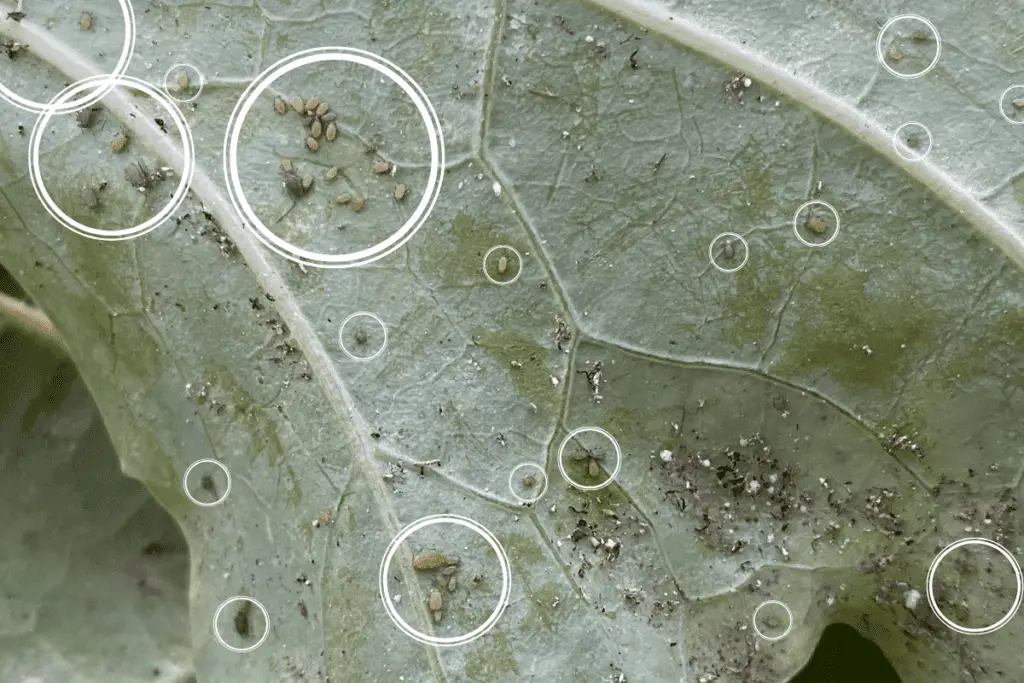
These aphids have two primary mechanisms for surviving in winter. First, like so many insects, they go into a state that’s referred to as diapause when confronted with harsh weather conditions. This means that they’re basically doing the insect equivalent of hibernating. Their metabolic processes slow down, which means that nymphs don’t develop at their previous pace, and adults minimize their feeding and reproductive activities.
Aphids do this to conserve what little energy they have so as to better withstand harsh conditions until more favorable weather arrives.
But aphids do something else to stay alive during cold winter weather: They produce antifreeze-like chemicals inside their bodies that keep their cells from developing ice crystals and bursting when the weather dips below the freezing point. This is why researchers refer to aphids as “freeze tolerant” and why these garden pests can reappear in spring despite harsh winter weather.
Unlike adults and nymphs, aphids in their larval stage have a much easier time when it comes to overwintering (although “easier” is a relative term given overall high mortality rates among adults, nymphs, and larvae alike).
When female aphids lay eggs in the latter part of the year, they deposit those eggs in various places around their preferred food source. When winter weather arrives, the larvae diapause, and the egg provides an additional layer of protection against cold, sometimes freezing, temperatures.
As soon as warm weather arrives, female aphids hatch from their eggs and get to work feeding and reproducing new generations of aphids.
Fortunately for those of us who love gardening, the winter months are typically hard on aphid populations. As research has shown, there’s often an 80% or higher mortality rate among various aphid species in winter–adults, nymphs, and eggs alike.
This is good news overall for gardeners, but if you were hoping that the winter would kill off the aphids in your area, you’ll want to be on the lookout for them in early spring because they’re likely going to come right back if you don’t do anything to stop them.
If you’d like to take a deeper dive into this topic, check out my article on whether aphids die in the winter or not, where I explore this subject in more scientific detail.
Where Do Aphids Go in Winter? 3 Places to Find Aphids
Answering the question “Where do aphids go in winter?” is difficult because there’s so much variance among aphid populations.
From their colors (black, green, white, red, yellow, and more) to their geographic distributions, preferred host plants, and disease transmission capabilities, aphids are an incredibly diverse family of global pests.
Generally speaking, aphids overwinter in three distinct places. They’ll lay their eggs on plant foliage and branches–typically on or around stems, nodes, or buds–or deposit them in the bark and crevices of tree trunks. Some species even overwinter among fallen leaves and mulch.
Let’s take a quick look at each of the 3 primary places where aphids tend to overwinter:
1. Foliage and Branches
Aphids do most of their migrating during the summer and fall at a time when female aphids give birth to winged versions of themselves through parthenogenesis, a scientific term for asexual reproduction.
When winter arrives, aphids will then stay put to conserve energy, so you’ll notice aphids hiding among your plants’ foliage and branches. In fact, egg-laying species (known as holocyclic aphids) tend to lay their eggs around branch nodes and buds, providing additional protection for their developing larvae.
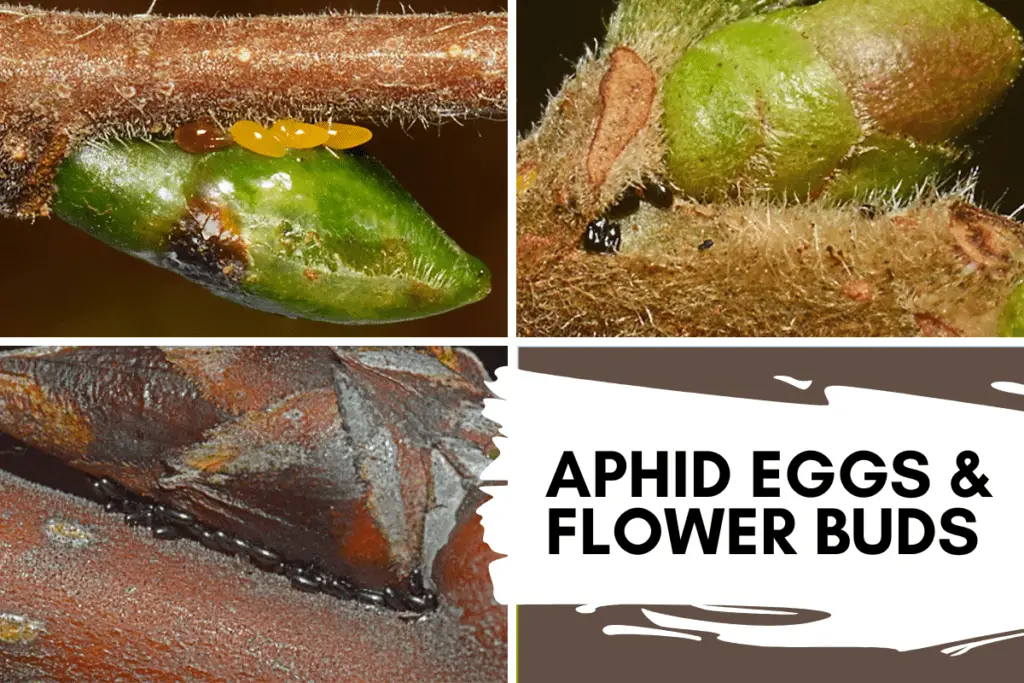
2. Tree Trunks
There are literally hundreds of aphid species that prefer trees over garden plants. For these aphids, trunks provide natural spaces for overwintering. Aphids have been known to overwinter between the ridges of tree bark or in other crevices found along the tree trunk. These small gaps not only protect aphids from potential predators. They also provide additional shelter against the elements.
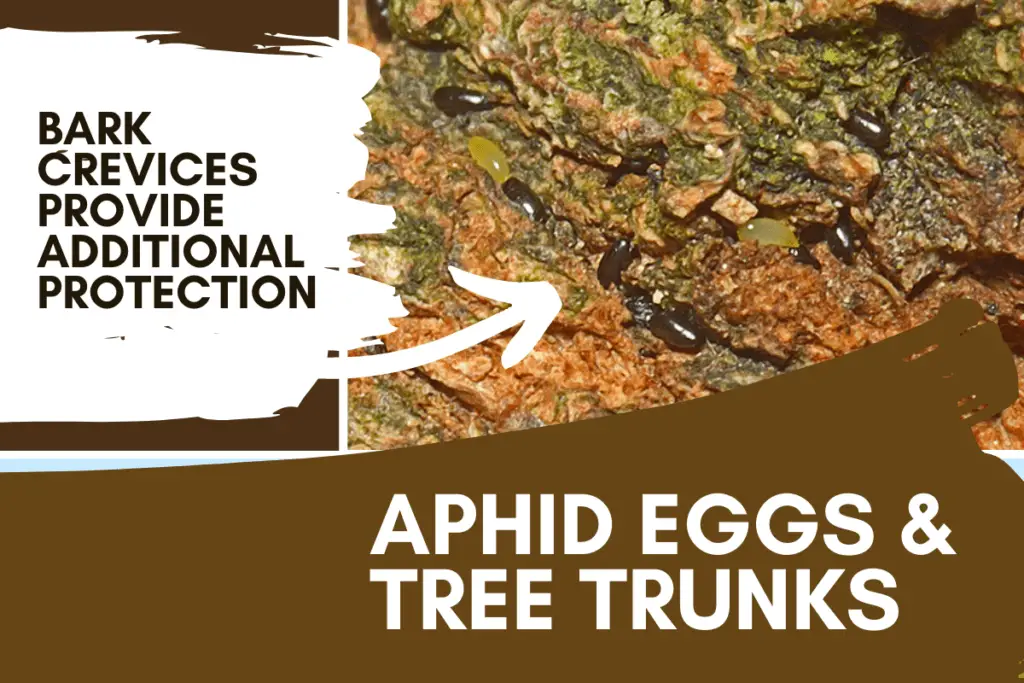
3. Leaves and Mulch
I was surprised to learn that some aphid species are known to deposit their eggs on or underneath fallen leaves and mulch that have gathered at the base of plants. The vegetation provides some protection against the cold weather while also ensuring that newly-hatched aphids can easily access nearby food sources.
Aphids do not typically overwinter on or underneath the soil. Even soil-dwelling aphids such as lettuce root aphids will usually migrate to nearby trees before laying their eggs.
The only aphids I know of who overwinter in the soil are root aphids (Daktulosphaira vitifoliae), although they’re not technically aphids. They’re actually closely related cousins to aphids. These aphid look-alikes will burrow into the soil to lay their eggs, where they’ll be protected until spring.
How Do I Kill Aphids in Winter?
If you live in colder northern climates, there’s not much you can do about aphids during the winter because you’ve likely got snow on the ground (sometimes lots of snow!).
I lived and gardened in New Jersey for many years. The spring, summer, and fall were perfect for gardening, but the winters were abysmal. Good luck growing much of anything outside when you’ve got a windchill of 0℉ (-17.8℃). In fact, you shouldn’t be outside at all on days like that!
But if you live in a more temperate region–such as North Texas, where I currently live–you can maintain a garden of some kind throughout the winter months, although that might require the use of greenhouses, grow lights, sheltered microclimates, or containers that can be moved to and from garages and other enclosures.
Wherever you happen to live–except possibly those of you who live closest to the arctic and antarctic poles–it’s possible for aphids to survive in your area and to reproduce when spring arrives. Aphids species are all over the world, and they’ve adapted to survive in everything from hospitable to harsh climates.
With this in mind, and assuming you still have something growing in your garden or greenhouse this winter, I have a few suggestions for handling aphids during the cold winter months:
1. Examine Plants Closely
This is something of a no-brainer, but if you’re in an area where you can garden during the winter, don’t ignore your plants. As I noted at the beginning of this article, some aphids will remain alive and well even in sub-freezing temperatures.
Pay close attention to the undersides of leaves, the intersections of branches, and any apparent buds. This is where aphids like to hide and where female aphids often lay their eggs. If you see any aphids or eggs on your plants, you’ll want to take care of the problem immediately instead of allowing them to overwinter and come roaring back in spring.
2. Spray Unwanted Pests
Much like you’d do during warm weather months, you’ll want to spray your plants with an insecticidal product (or even a strong burst from a water hose) if you notice aphids on them, whether it’s cold outside or not.
Just be careful when it comes to cold weather. You shouldn’t spray your plants with anything when temperatures are going to be at or below freezing anytime soon. If you do so, you might end up doing more harm than good.
If it’s freezing outside and you notice aphids on your plants–as I did last year when I saw aphids on my kale despite it being 18℉ (-7.8℃) outside–I recommend putting on a pair of work gloves (which you might already be wearing since it’s cold outside) and squashing as many bugs as possible with your hands. It doesn’t take much–a little pinch will kill any aphid.
One final tip: If you’ve got a powerful hand vacuum with a narrow point nozzle, you can try sucking aphids up with it. Just be sure not to damage your plants in the process.
3. Get Rid of Infested Plant Material
If a plant is doing relatively well in winter but has heavily damaged vegetation, it might make sense to cut off the affected leaves and throw them in the compost or trash, depending on the size and scope of the problem.
With heavy aphid infestations, I’ve been known to give the leaves several stomps before tossing them out to make sure that I’ve killed as many aphids as possible before I compost or trash them. You certainly don’t need to do this, but I find it a tad bit cathartic. Go figure!
One final thing: The more I learn about the aphid life cycle, the more I find these pests both complex and fascinating, especially the lengths that aphids will go to to survive in winter.
Thankfully, aphids can’t harm humans, and they won’t hurt pets, but they can destroy all kinds of plants–even in cold weather–causing headaches for gardeners who have to decide whether to nurse plants back to health or simply compost or throw them away.
Now that you’ve learned a bit about what happens to aphids during the cold weather months, take a look at my article on where aphids come from in case you’d like to learn more about the aphid life cycle and its potential impact on your garden.
Credit to Tesla Delacroix and Jacopo Werther for the photos adapted for this article’s featured image.

